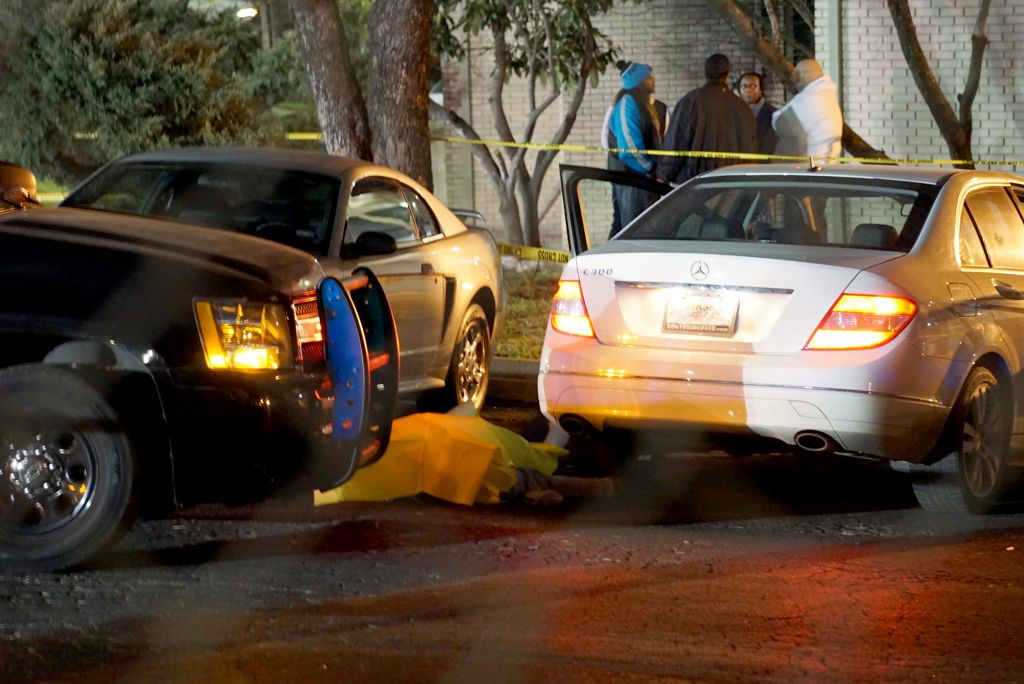A San Antonio Police Officer who shot an unarmed man has been informed that he will be the subject of an Indefinite Suspension. This is the first step towards firing him. “Officer John Lee has been issued a contemplated indefinite suspension for placing himself unnecessarily in a tactical situation where in he felt compelled to use deadly force,” SAPD Chief William McManus said in an emailed statement.
I can translate this statement , but I have no idea what the Chief is talking about. Keep in mind the response of SAPD as opposed to that of the Cleveland PD and the twelve year old.
Keep in mind also the case of the probationary officer in Arlington, Texas who was fired after killing a burglar at a car dealership.
The International Association of Chief of Police (IACP) did a study in the mid 70’s and issued recommendations regarding the investigation of police use of force. One of the recommendations that stuck was that the investigation of officer involved shootings should have two components, that is two investigations. One investigation would look at the circumstances of the shooting from the standpoint of policy, procedure, training, equipment and internal controls. The goal was to ensure that officers were properly equipped, trained and given the proper guidance to do the job.
The second investigation is a homicide investigation. Every murder is a homicide but not every homicide is a murder. These investigators were tasked with identifying the circumstances surrounding the shooting, gathering evidence, identifying the perpetrator and determining if the shooting was “justified” under the law.
The San Antonio Police Department has completed their review of this shooting and decided that the officer violated key areas of policy and training and that the violations led to his use of force. The City has not made a judgment as to whether the shooting was justified as determined by state law. Go to Title 9 of the Penal Code for that criteria.
The Bexar County District Attorney has not completed their investigation. This is the investigation that will determine if the officer was justified under state law.
While I spoke of two investigations, one to determine if the shooting was “within policy” and the second to determine “criminal liability.” That is not the end of the investigative and sanction road. The FBI could mount a Federal criminal investigation to determine if the deceased civil rights were violated. The Texas Attorney General could get involved to investigate whether reporting obligations for in custody deaths were met. The Texas Commission on Law Enforcement (TCOLE) the licensing body for Texas Peace Officers could initiate an investigation to determine if the officer should retain his peace officer license. Finally, a civil attorney representing the family can sue the city under a theory of negligence in training, negligent entrustment (giving the officer a gun), supervision (not telling him what to do with the gun) or failing to have an effective plan or communicate that plan to deal with the situation. Finally the officer is subject to being sued for not following the rules and law governing his activities.
Most police agencies place additional restrictions on their officers not found in the Texas Code of Criminal Procedure or Texas Penal Code. This is one of those situations were the officer had the responsibility to act in a certain manner in order to be compliant with police policy and procedure. However, there may not be a similar obligation imposed under the state statute. This sets up a conflict where the officer is held to the higher standard.
Let’s not forget the obligation the deceased had to follow the laws of the state of Texas. Simple stuff like don’t deal dope and don’t carry a gun, as a previously convicted felon. More immediately, when you are stopped by the police do what you are told to do.
I don’t trust Chief McManus to do the right thing because it is the right thing. But I think I prefer SAPD’s handling of this incident rather than the way Cleveland handled Tamir Rice.
In case you weren’t counting that is six different investigations directed at the same circumstances. However, they are not all looking at the same thing. They are not all asking the same question. It is entirely possible, even likely, that if all of these investigations came to pass that some would support the officer and others would not. Such a result would not be a “cover up” or a conspiracy but a good faith attempt to remain within the scope of the investigative task. It is along these boundary lines where the demagogues lie in wait.
UPDATE: In a March 3, 2016 interview, Chief McManus admitted that the officer was likely to prevail at a civil service hearing and get his job back. So much for “good faith”.
